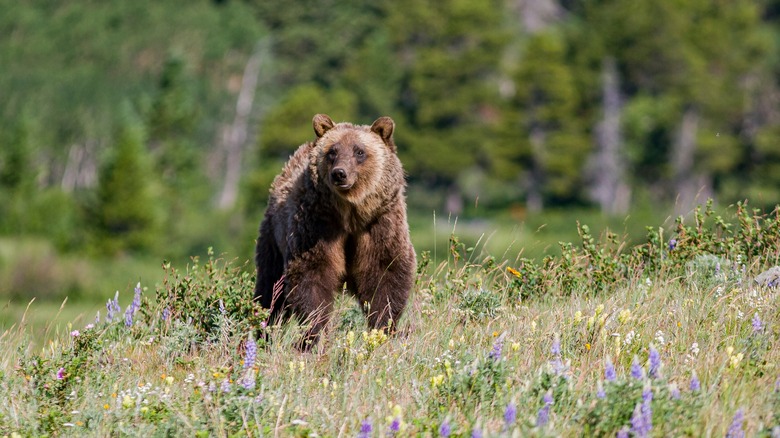One Of The Most Dangerous Camping Destinations In America Is An Iconic National Park
Nestled in the heart of Montana's Rocky Mountains, Glacier National Park spans a stunning 1,583 square miles, extending all the way to the Canadian border. Known for its awe-inspiring glacier-carved peaks, alpine meadows, and crystal-clear lakes, Glacier attracts outdoor enthusiasts from around the world. It's a hikers paradise, with over 700 miles of trails winding through valleys and across mountains, offering opportunities to witness breathtaking scenery and wildlife. The park is home to 26 glaciers, though many have dramatically shrunk, which has only increased the urgency of visitors hoping to see these natural wonders before they disappear.
With over 3.3 million visitors annually, Glacier remains one of the most popular parks in the U.S. However, beneath its natural beauty lies a much darker side, earning it the reputation as one of the most dangerous camping destinations in America. Outdoor Guide has ranked Glacier as the most dangerous place to camp in the U.S., with 2 to 3 deaths reported annually.
The park's landscape and wildlife — especially its bear population — contribute to its dangers. Glacier is home to around 1,000 bears, including 600 black bears and about 300 grizzly bears. Grizzly bears, in particular, have been the greatest threat, with one of the most notorious incidents occurring in 1967 when two grizzlies, in separate areas of the park, attacked and killed two women. The risk of encountering a bear while camping in Glacier is very real, and for those who aren't prepared, the consequences can be fatal. Fortunately, there are ways to stay safe while camping in this untamed environment.
Staying safe in bear country
The National Park Service (NPS) emphasizes the importance of maintaining a safe distance from wildlife, especially bears. Campers and hikers should keep at least 100 yards between themselves and any bear. A good rule of thumb: If an animal changes its behavior because of your presence, you're too close.
When hiking, it's essential to make noise to alert bears to your presence and avoid startling them. Traveling in groups of four or more is recommended, as no attacks have been reported on groups of this size or larger in Glacier National Park. It's also crucial to carry bear spray, the most effective deterrent in the event of an encounter.
To further reduce the risk of bear encounters, campers should pack food properly and secure all snacks and garbage in bear-safe containers or vehicles. Keeping a clean camp and following park regulations about food storage can help prevent attracting bears to your site. Monitor the area for bear activity and report any signs of bears or careless campers to park staff. Come prepared, respect the wildlife, and learn how to stay safe around bears to enjoy Glacier's stunning landscapes while minimizing the dangers of camping in this rugged and iconic park.

